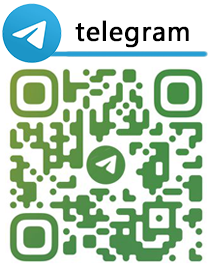pv command to clone the drive you are booted on Cloning an SSD with pv command. Ask Question. Asked 4 years, 11 months ago. Modified 4 months ago. Viewed 7k times. 4. Can someone explain me the answer of: How to clone SSD with Linux Mint 18 to a larger SSD. What's up with: pv /dev/sdY. PV . Updated: 10 hours ago. |. By C.C. McCandless. The NFL released its 2024 season schedule in full on Wednesday evening, and Las Vegas Raiders fans have several .
0 · cloning hard drive to image
1 · clone hdd to image
2 · clone hard drive to livecd
3 · clone hard drive to image ubuntu
4 · clone hard drive to image later
5 · clone drive to image
Features: NEW metric or trunnion style remote shock offerings. DPS damper with three positions Open, Medium, Firm modes. Dual Piston valve design improves both rebound and compression flow. Lightweight, one-piece EVOL air sleeve improves responsiveness and sensitivity. Hardware/bushings sold separately. Love this Product? Write a review.
tudor avis
Cloning an SSD with pv command. Ask Question. Asked 4 years, 11 months ago. Modified 4 months ago. Viewed 7k times. 4. Can someone explain me the answer of: How to clone SSD with Linux Mint 18 to a larger SSD. What's up with: pv < /dev/sdX > /dev/sdY. PV . To get a handy progress bar and the ETA to completion, pipe the dd command through pv: sudo dd if=/dev/sdX | pv -s 99999m -bpae | dd .
sudo kpartx -a /dev/loop0. This will read the partition table within the disk image, and will create devices like /dev/mapper/loop0p1, /dev/mapper/loop0p2 etc. for all the . Clone SRC disk to DST disk using the pv & dd utilities (pv is available in the Ubuntu “universe” apt-get repo): sudo su pv -tpreb {SRC} | dd of={DST} bs=4K . Yes, you can safely copy the encrypted data, in it's "encrypted form" (sort of speak) so that when you decrypt and access it later from said copy, you will be able to retrieve, read, .First, find a way to get the Ubuntu livecd access to the source image we created in Step 2. Most likely this means plugging a USB drive into the machine. Once you have access to the image .
christian dior cd earrings
Backing up your hard drive is easy. Here are a few ways to clone your entire hard drive in Linux, allowing you to back up your data with ease.First answer on google suggested (on a Linux system): dd if=/dev/sdb of=- | tee >(dd of=/dev/sdc) >(dd of=/dev/sdd) >(dd of=/dev/sde), where /dev/sdb is the hard drive you want to clone and . You have to use something like pvresize --setphysicalvolumesize 111G /dev/nbd0 (if you attached it as nbd0 on previous step). After it is reduced, you can use dd from the NBD . Cloning an SSD with pv command. Ask Question. Asked 4 years, 11 months ago. Modified 4 months ago. Viewed 7k times. 4. Can someone explain me the answer of: How to clone SSD with Linux Mint 18 to a larger SSD. What's up with: pv < /dev/sdX > /dev/sdY. PV => a command for timing other command but what is the "< source disk >" ?
To get a handy progress bar and the ETA to completion, pipe the dd command through pv: sudo dd if=/dev/sdX | pv -s 99999m -bpae | dd of=rescue.dd where /dev/sdX is the device name of the drive you want to copy and 99999 is the size of the device in MiB (not MB). sudo kpartx -a /dev/loop0. This will read the partition table within the disk image, and will create devices like /dev/mapper/loop0p1, /dev/mapper/loop0p2 etc. for all the partitions. You can use those to mount the partitions normally.
The ‘pv’ command, short for Pipe Viewer, is a terminal-based tool in Linux used to monitor data flow through pipes. It provides a visual representation of the progress, making it easier to track the status of long-running data transfers. Clone SRC disk to DST disk using the pv & dd utilities (pv is available in the Ubuntu “universe” apt-get repo): sudo su pv -tpreb {SRC} | dd of={DST} bs=4K conv=notrunc,noerror,sync 1 Yes, you can safely copy the encrypted data, in it's "encrypted form" (sort of speak) so that when you decrypt and access it later from said copy, you will be able to retrieve, read, view, and modify the unencrypted, or more specifically decrypted, data in .First, find a way to get the Ubuntu livecd access to the source image we created in Step 2. Most likely this means plugging a USB drive into the machine. Once you have access to the image file run the following command, replacing [image-file] with the path to your source tar file: pv < [image-file] | tar -C ~/dest -x.
Backing up your hard drive is easy. Here are a few ways to clone your entire hard drive in Linux, allowing you to back up your data with ease.First answer on google suggested (on a Linux system): dd if=/dev/sdb of=- | tee >(dd of=/dev/sdc) >(dd of=/dev/sdd) >(dd of=/dev/sde), where /dev/sdb is the hard drive you want to clone and /dev/sdc, /dev/sdb, and /dev/sde are drives to clone to (you can add as many more of these as you want, just copypaste).
You have to use something like pvresize --setphysicalvolumesize 111G /dev/nbd0 (if you attached it as nbd0 on previous step). After it is reduced, you can use dd from the NBD device. Better disuse the target partition and remove any leftover labels from it .
Cloning an SSD with pv command. Ask Question. Asked 4 years, 11 months ago. Modified 4 months ago. Viewed 7k times. 4. Can someone explain me the answer of: How to clone SSD with Linux Mint 18 to a larger SSD. What's up with: pv < /dev/sdX > /dev/sdY. PV => a command for timing other command but what is the "< source disk >" ? To get a handy progress bar and the ETA to completion, pipe the dd command through pv: sudo dd if=/dev/sdX | pv -s 99999m -bpae | dd of=rescue.dd where /dev/sdX is the device name of the drive you want to copy and 99999 is the size of the device in MiB (not MB). sudo kpartx -a /dev/loop0. This will read the partition table within the disk image, and will create devices like /dev/mapper/loop0p1, /dev/mapper/loop0p2 etc. for all the partitions. You can use those to mount the partitions normally. The ‘pv’ command, short for Pipe Viewer, is a terminal-based tool in Linux used to monitor data flow through pipes. It provides a visual representation of the progress, making it easier to track the status of long-running data transfers.
Clone SRC disk to DST disk using the pv & dd utilities (pv is available in the Ubuntu “universe” apt-get repo): sudo su pv -tpreb {SRC} | dd of={DST} bs=4K conv=notrunc,noerror,sync 1 Yes, you can safely copy the encrypted data, in it's "encrypted form" (sort of speak) so that when you decrypt and access it later from said copy, you will be able to retrieve, read, view, and modify the unencrypted, or more specifically decrypted, data in .First, find a way to get the Ubuntu livecd access to the source image we created in Step 2. Most likely this means plugging a USB drive into the machine. Once you have access to the image file run the following command, replacing [image-file] with the path to your source tar file: pv < [image-file] | tar -C ~/dest -x.
Backing up your hard drive is easy. Here are a few ways to clone your entire hard drive in Linux, allowing you to back up your data with ease.First answer on google suggested (on a Linux system): dd if=/dev/sdb of=- | tee >(dd of=/dev/sdc) >(dd of=/dev/sdd) >(dd of=/dev/sde), where /dev/sdb is the hard drive you want to clone and /dev/sdc, /dev/sdb, and /dev/sde are drives to clone to (you can add as many more of these as you want, just copypaste).
cloning hard drive to image
clone hdd to image
clone hard drive to livecd

972-01-451 / FLOAT DPS Performance 3pos Evol LV (vol. Eyelet) [7.875, 2.0] 200 x 50.8mm 2021. Technologies: DPS. Double piston. FLOAT shocks equipped with our Dual Piston System (DPS) feature three instant settings (open, medium and firm) allowing the rider to adapt to a wide variety of terrains.
pv command to clone the drive you are booted on|clone hdd to image


























